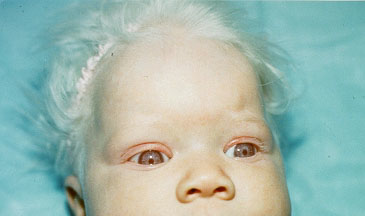
Chediak-Higashi syndrome (CHS) is characterized by partial oculocutaneous albinism (OCA), immunodeficiency, and a mild bleeding tendency. Approximately 85% of affected individuals develop the accelerated phase, a lymphoproliferative infiltration of the bone marrow and reticuloendothelial system. Adolescents and adults with atypical CHS and children with classic CHS who have successfully undergone allogenic hematopoietic stem cell transplantation (HSCT) develop neurologic findings during early adulthood.
Symptoms
Children with this condition may have:
* silver hair
* light colored eyes (albinism)
* jerky eye movements
* dicreased vision
* intellectual disability
* muscle weakness
* nerve problem in the limbs
* nosebleeds or easy bruising
* numbness
* tremor
* seizures
* sensitivity to light (photophobia)
Diagnosis
The diagnosis of Chediak-Higashi syndrome (CHS) should be considered in individuals with pigment dilution defects of the hair, skin, or eyes; congenital or transient neutropenia; immunodeficiency; and otherwise unexplained neurologic abnormalities or neurodegeneration. Each of these findings may be variably represented in affected individuals; therefore, heightened suspicion is needed to pursue an accurate diagnosis.
Treatment
There is no specific treatment for Chediak-Higashi syndrome. Bone marrow transplants appear to have been successful in several patients, especially when performed early in the disease.
Antibiotics are used to treat infections. Antiviral drugs such as acyclovir and chemotherapy drugs are often used in the accelerated phase of the disease. Surgery may be needed to drain abscesses in some cases.
source: sangga or click here
No comments:
Post a Comment